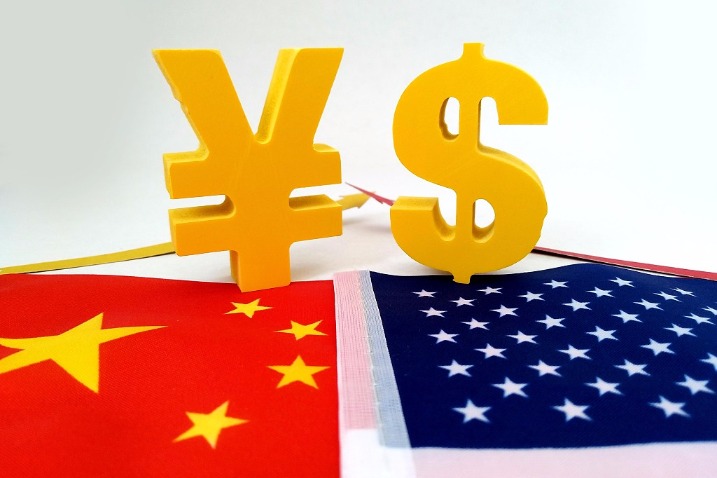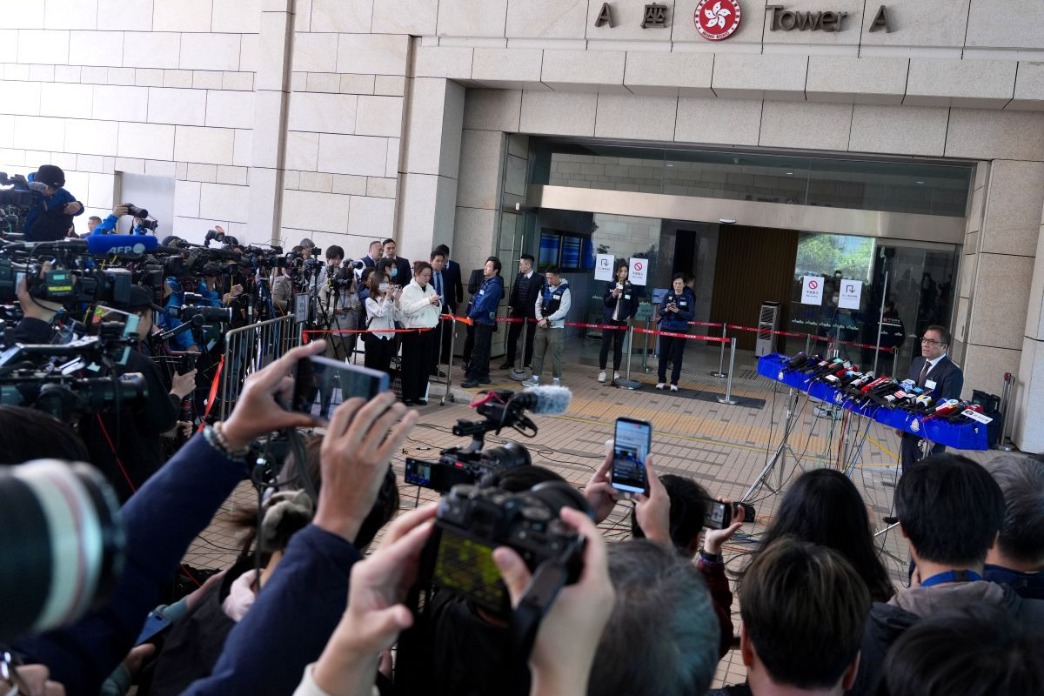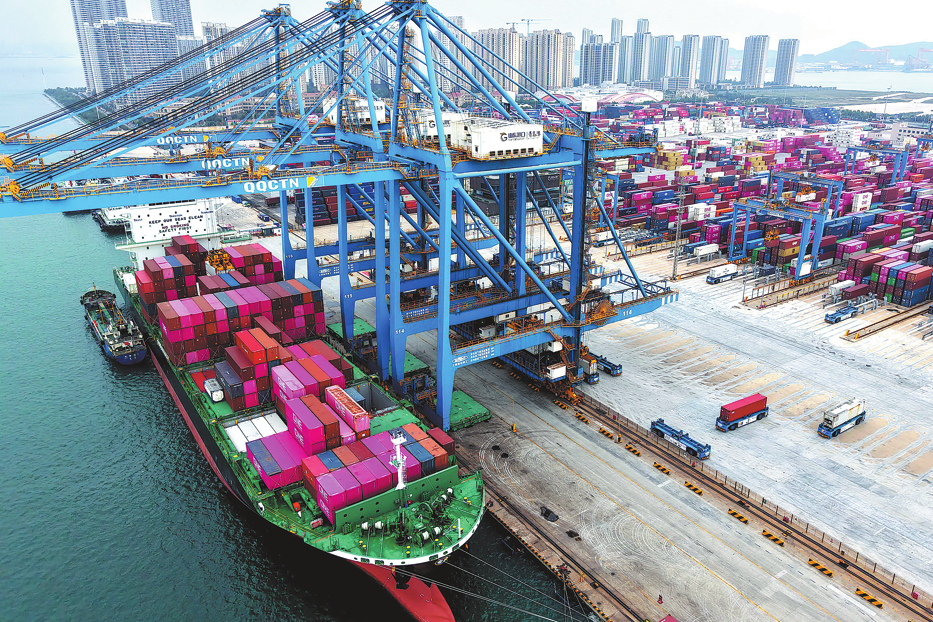Infrastructure ideal for Sino-US cooperation


US President Donald Trump and Congressional Democratic leaders recently agreed to work out an infrastructure package worth $2 trillion. This came after Trump announced a $1.5 trillion infrastructure investment planthe largest US infrastructure expansion and modernization plan since the 1950s-in the National Security Strategy report issued in December 2017.
Over the past 30 years, China has gained rich experience in infrastructure, from capability, standards and implementation to management and innovative technologies. And since in today's world of "competitive cooperation", China-US relations are shaping the world, their cooperation in infrastructure development would benefit not only China and the United States, but also the rest of the world.
To pursue infrastructure cooperation and further integrate the two economies, however, the two sides have to first conclude the Bilateral Investment Treaty negotiations.
Infrastructure cooperation can boost global growth
As the world's two largest economies, China and the US account for 40 percent of global GDP and 32.8 percent of global exports. Stimulating global growth and strengthening energy security through infrastructure development serves the interests of both China and the US. Infrastructure cooperation will bring the two economies closer, deliver economic benefits to both, strengthen mutual political trust, increase non-governmental exchanges, and contribute to global economic stability and prosperity. Through cooperation, Chinese companies can gain better knowledge about international rules, adapt to the business environment of developed countries, and enhance their global competitiveness.
More important, infrastructure cooperation may ease the trade tensions between China and the US. Thanks to its fast-paced economic growth, China has built huge foreign exchange reserves-$3.1 trillion by May this year. It holds $1.11 trillion worth of US treasury bonds, making it the largest creditor of the US. Infrastructure cooperation will help China to balance its foreign exchange reserves and the US to reduce its debt and revitalize its infrastructure. Which may alleviate the pressure on the US to fund its infrastructure development, spur growth, increase employment, and reduce its trade deficit.
Mutual trust can lead to infrastructure cooperation
Trade frictions and the worsening global security environment have affected China-US relations. The two sides also have differences over the trade deficit, trade rules and intellectual property rights, which are inevitable in this era of "competitive cooperation".
So they must seek common ground based on mutual understanding and work to build an open, transparent and efficient economic system, while according priority to solving economic problems to create political harmony.
The need to improve infrastructure worldwide is an opportunity for China and the US to expand cooperation. But to avail of that opportunity, they have to understand each other's strategic priorities. And since the US is turning inward, China will have to play a more significant role in international infrastructure development. For example, China can use the Belt and Road Initiative, which has already expanded its influence, to promote infrastructure construction.
Besides, the success of the US infrastructure plan hinges not on funding alone, but more importantly on the US perception of infrastructure and the US political system, which remains a source of constraints.
Previous US infrastructure plans made slow progress
First, US investment in infrastructure has been slow, producing less than desirable effects. The George W. Bush and Barack Obama administrations both proposed infrastructure investment plans. But due to institutional constraints, private investors' demand for high returns, and differences between the Democrats and Republicans, those plans made limited progress.
The US infrastructure is aging, even collapsing, due to a lack of reasonable public spending in almost 30 years. Take US highways for example. Now that people are being encouraged to buy electric cars, it is more difficult to maintain highways by collecting fuel taxes.
In this regard, the financing vehicles created by Chinese banks can be a point of reference for the US. The US federal, state and local governments can establish financing vehicles to encourage collaboration between Beijing and Washington. Moreover, if China holds shares in a US infrastructure investment company and the US becomes a shareholder of the Asian Infrastructure Investment Bank, it will increase mutual trust and help secure funding for US infrastructure construction.
Second, the US can draw on China's model of development finance to leverage the roles of both the market and government-similar to what the US did in the 1930s and 1950s. With the backing of government credit, the US can reduce financing costs without increasing government debt.
Also, independent decisions could be made for individual projects, and a financing platform built, through which state and local governments could borrow and repay loans, manage the funding pool and use the financial resources where it is needed. And project revenue bonds can be issued to secure long-term, sustainable, low-cost financing globally.
Cooperation based on economic benefits
Third, since the proposed US infrastructure plan could lead to growing fiscal deficits in the short term, China should seek cooperation under the principle of appropriate economic benefits, especially on projects of strategic significance. This will reduce the debt burden on the US and help Chinese companies to enter the US market. That said, the US should take steps to reduce the uncertainties over Chinese investment, and gradually open its infrastructure, high-tech, energy and resources sectors to Chinese companies.
During Trump's visit to China in November 2017,$253.5 billion worth of business deals were signed, reflecting the potential of China-US cooperation. So the two sides should seize every opportunity to boost growth and seek win-win results.
Fourth, China and the US should explore cooperation on production capacity. China's production capability in infrastructure is far stronger than the US. For example, of the total global steel output of 1.63 billion tons in 2016, China produced 808 million tons, 10 times more than the US. It also produced 2.4 billion tons of cement in 2016, 30 times more than the US. And China's coal production capacity was 5.7 billion tons in 2015, with the actual output being 3.36 billion tons compared with 800 million tons in the US.
Infrastructure upgrading to create big opportunities
In the next 20 years, the US will need more than $8 trillion to upgrade its infrastructure, creating enormous opportunities and a huge market for global investors and infrastructure companies.
So China needs to engage the US more actively and strengthen policy coordination with the US administration on infrastructure. Infrastructure cooperation is one area where the two countries could build a new type of strategic relations. In the broad context, there has been a notable shift in the strength of the two countries. China is gaining more strategic advantage, which could be the basis for building a new model of major-country relations between China and the US.
China and the US have started a comprehensive strategic dialogue, and should have closer economic links and deeper integration of interests. Much can be done to change the perception of the US public, both the elites and the grassroots, about China. There is a need, therefore, to secure popular support for China-US infrastructure cooperation by pursuing public diplomacy and engaging the media, which in turn would deepen China-US strategic trust and help avoid conflicts.
Need to establish bilateral coordination mechanism
The two sides should also establish a coordination mechanism for infrastructure cooperation that is included in the four existing mechanisms. For example, Beijing could negotiate with Washington on opening up the US market to China by revising its national security review. And apart from relaxing the restrictions on the export of some high-tech products to China, the US could also form teams to study how China can boost US infrastructure development.
As for China, it should explore the debt-to-equity model to participate in US infrastructure development, for which Washington could secure funding through public-private partnerships. But it will take a long time to work out a $500 billion to $1 trillion funding plan that is acceptable to private investors and doesn't significantly increase the burden on the government.
China has the largest foreign exchange reserves in the world. At the time of quantitative easing, China faces a dilemma: how to turn the US debts it holds into US dollar assets so as to manage inflation in the future. In this regard, China's foreign reserves could be the source of the much-needed financing for rebuilding US infrastructure.
China has built large and sustainable infrastructure facilities, and even developed some important products and technologies. It is home to more than half of the world's high-speed railway network, and leads the world in building roads, bridges, tunnels and other infrastructure facilities.
Chinese firms should be aware of risks
In conformity with international standards and in keeping with local conditions, the US could use China's standards in design and products as well as innovative technologies, which would increase China's say in setting standards. But since investing in US infrastructure involves political, labor, environmental and currency risks, Chinese companies must be fully aware of those risks and use financial and economic tools to protect their interests.
Since Trump has emphasized many times the need to use US-made products in infrastructure construction projects and promised to create 25 million jobs in 10 years, Chinese companies involved in infrastructure projects in the US should comply with local market, legal and government requirements, and procure as much local products as possible.
The Chinese government also needs to encourage joint investment between Chinese and US companies in American infrastructure projects, which will help reduce market barriers and facilitate investment. And Chinese companies should make efforts to acquire local companies or invest in new enterprises as CRRC and Haier have done.
They could also partner with American companies that are operating in China to invest in the US, or work with them on infrastructure projects in third countries.
This will raise the profile of Chinese companies in the US and promote China's industrial strengths worldwide.
The author is senior research fellow at China Development Bank. The views don't necessarily represent those of China Daily.


































